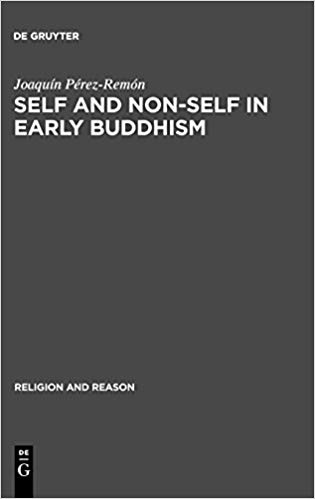The following is an extract from a review of Self and Non-Self in Early Buddhism by Vijitha Rajapakse published by the Journal of the International Association of Buddhist Studies 8, no.1 (1985): 122–25:
Pérez-Remón's book is analytical in nature, and its immediate aim is to provide an interpretative study of the anattā doctrine as it appears in the earlier parts of the Pali canon, namely the Nikaya literature. He describes the religious views elaborated in these contexts as a soteriology, that is to say a system of moral training which considers salvation to be its prime goal. Buddhist writings on the self, he argues, are not as clear and unambiguous as is often supposed. He does not, in particular, believe that one could regard them in a purely negative light, after the manner of certain Theravada exponents. The use and the import of "self" (attā) and "non-self" (anattā) are of course central to this study. In order to facilitate his inquiry into these key terms, he introduces some important distinctions which appear for the most part to be philosophical in nature. First, there is the distinction between the self in its existential and metaphysical signification; and second, between two senses of the term non-self, one qualified and the other absolute. Previous interpretations of the anattā doctrine have not revolved around distinctions of this kind. Perez-Remon, however, is of the view that it is necessary to focus on them in order to gain a true insight into early Buddhist thinking on the nature and existence of the self.
For the complete review, click here
| Citation | Pérez-Remón, Joaquín. Self and Non-Self in Early Buddhism. The Hague, Neth.: Mouton Publishers, 1980. |
|---|---|

